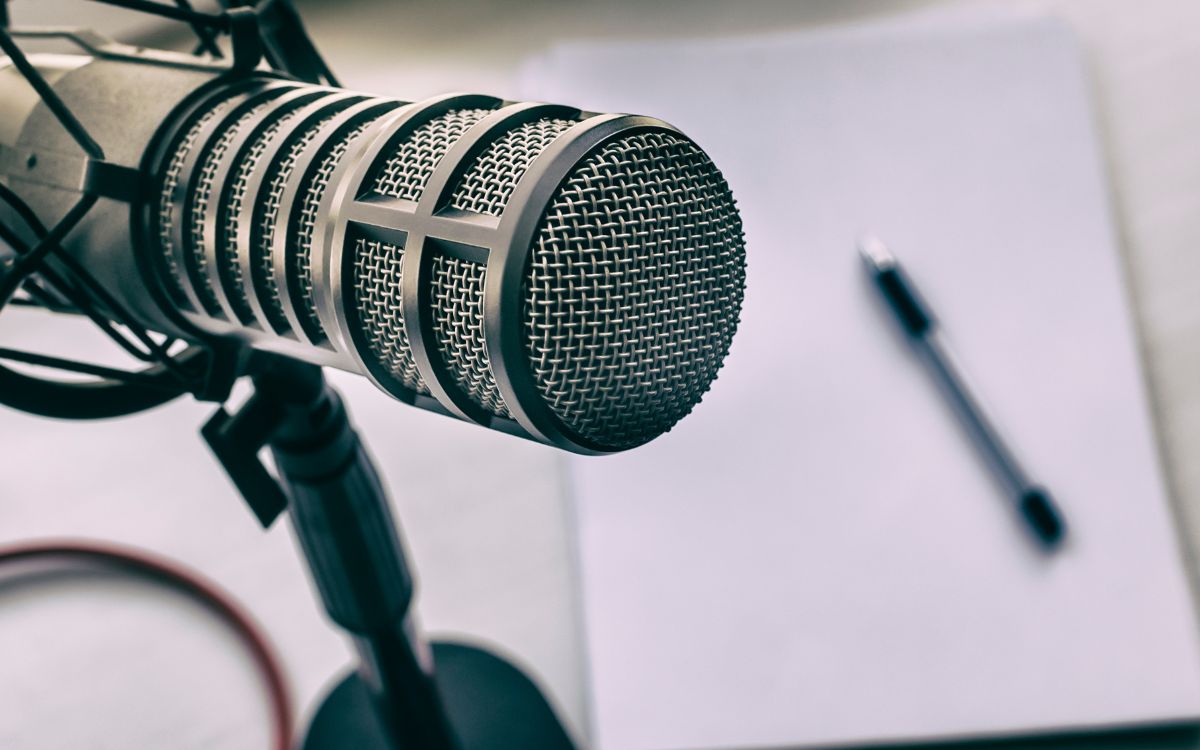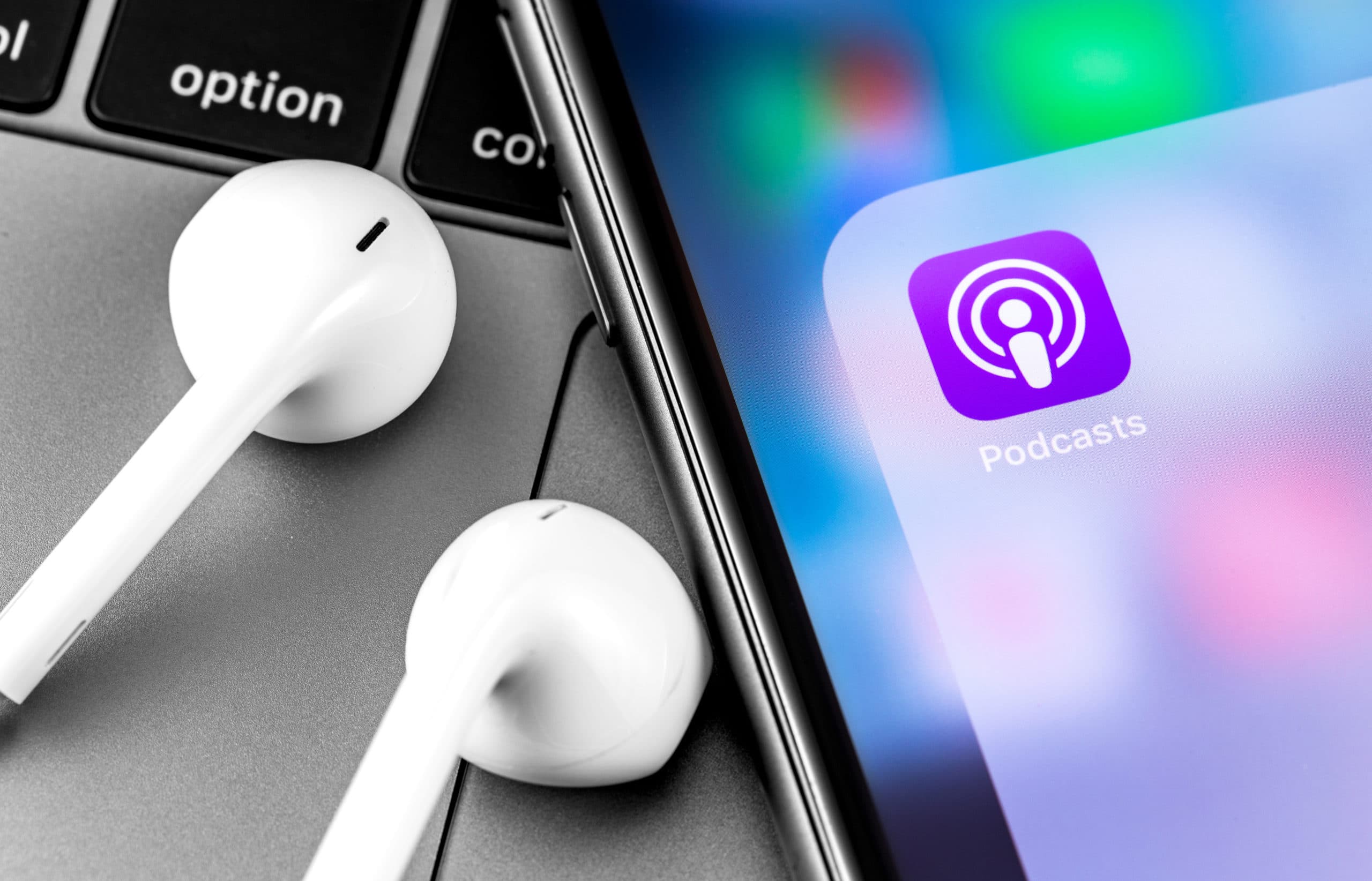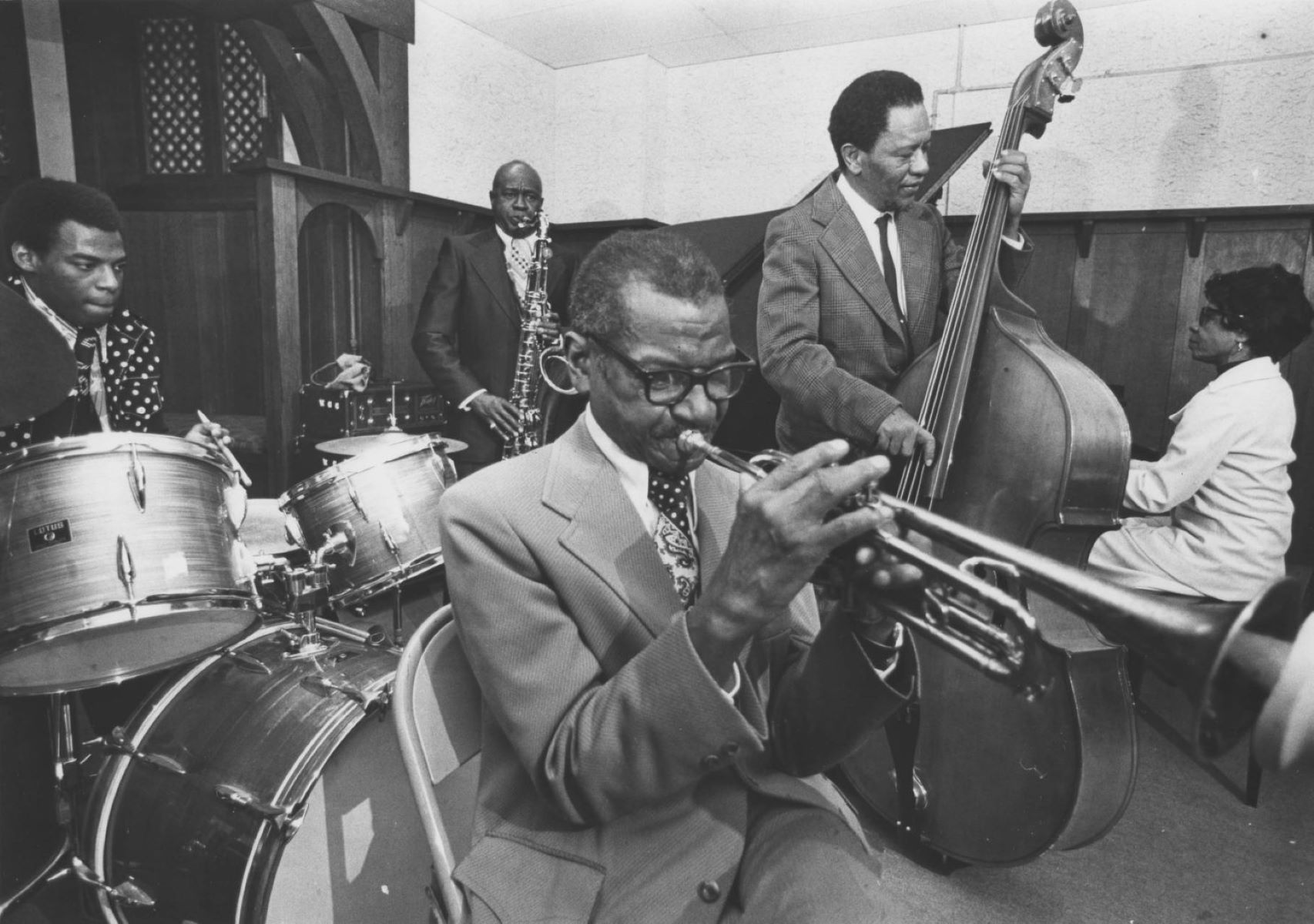Home>Events & Info>Podcast>Why Is Podcast Called Podcast


Podcast
Why Is Podcast Called Podcast
Modified: January 22, 2024
Discover the intriguing origins of the term "podcast" and unravel the fascinating reasons behind its unique name. Explore the world of podcasting and its evolution.
(Many of the links in this article redirect to a specific reviewed product. Your purchase of these products through affiliate links helps to generate commission for AudioLover.com, at no extra cost. Learn more)
Table of Contents
Introduction
Welcome to the world of podcasts, a medium that has exploded in popularity in recent years. Chances are, you’ve heard the term “podcast” before, but have you ever wondered where it came from or why it’s called a podcast? In this article, we’ll delve into the origins and meaning of this term, as well as explore the fascinating world of podcasting.
A podcast is essentially a digital audio or video file that is made available for streaming or downloading on the internet. Similar to radio shows, podcasts cover a wide range of topics, including news, entertainment, education, and storytelling. The beauty of podcasts is that they can be enjoyed on demand, allowing listeners to tune in whenever and wherever it suits them.
Now, let’s get to the intriguing question of why it’s called a podcast. The term “podcast” is a combination of “iPod” and “broadcast.” It originated back in 2004 when a journalist and software developer named Ben Hammersley coined the term in an article for The Guardian. Hammersley was referring to the emerging trend of creating audio programs that could be subscribed to and automatically downloaded onto portable media devices like Apple’s iPod.
The connection between the term “podcast” and the iPod is not surprising, as the iconic device played a significant role in the early days of podcasting. The iPod allowed people to carry their favorite podcasts with them on the go, providing a convenient and personalized listening experience.
However, it’s worth noting that podcasts are not limited to the iPod or any specific device. Today, you can enjoy podcasts on various platforms such as smartphones, tablets, computers, and even in-car entertainment systems. The term “podcast” has become more of a general descriptor for audio or video content that is distributed online.
The popularity of podcasts has skyrocketed over the years, thanks to their ease of access, diverse content, and the freedom they offer to both creators and listeners. As of 2021, there are millions of podcasts available, covering virtually every topic imaginable. From true crime and comedy to business and self-improvement, there’s a podcast out there for everyone.
In the next sections of this article, we’ll explore the benefits of podcasts, how they work, and their impact on traditional radio broadcasting. So, grab your headphones and let’s dive into the exciting world of podcasting!
Definition of a Podcast
Before we delve deeper into the world of podcasts, let’s start with a clear definition. A podcast is a form of digital media, typically audio or video, that is available for streaming or downloading on the internet. It is a series of episodes that can be subscribed to, allowing listeners to receive new content automatically.
Podcasts are similar to radio shows or TV programs, but with a key difference – they are on-demand. This means that listeners have the freedom to choose when and where they want to listen to their favorite podcasts. Whether it’s during a commute, workout, or relaxing at home, podcasts offer a convenient way to consume audio or video content.
The episodes within a podcast series can cover a wide range of topics, including news, entertainment, sports, education, technology, true crime, and much more. Essentially, there’s a podcast out there for everyone’s interests and hobbies.
Unlike traditional radio or TV broadcasts, podcasts are typically produced by independent creators or small teams. This allows for a more diverse range of content, as podcasters have the freedom to explore niche topics, share their expertise, and engage with a specific audience.
Podcasts are typically released on a regular schedule, such as weekly or biweekly, although some may have a more sporadic release pattern. Each episode can vary in length, ranging from a few minutes to several hours, depending on the style and format of the podcast.
What sets podcasts apart from other forms of media is their accessibility and convenience. Listeners can use various podcasting apps or platforms to subscribe to their favorite shows, ensuring that new episodes are automatically delivered to their device. This eliminates the need to search for new content manually.
Furthermore, podcasts offer a unique intimacy between hosts and listeners. Unlike radio or TV, where the content is broadcasted to a wide audience, podcasting creates a personal connection. Listeners often feel like they are part of a conversation, with hosts addressing specific topics and engaging with their audience.
Overall, the definition of a podcast encompasses a digital audio or video series that is available for streaming or downloading, with episodes that can be subscribed to and enjoyed on-demand. This flexibility and personal touch have contributed to the surge in popularity of podcasts and their appeal to a wide range of listeners.
Origins of the Term “Podcast”
The term “podcast” may seem like a relatively recent addition to our language, but its origins can be traced back to the early 2000s. The term was coined by a journalist and software developer named Ben Hammersley in an article for The Guardian in February 2004.
In his article titled “Audible revolution,” Hammersley discussed the emerging trend of creating audio programs that could be subscribed to and downloaded onto portable media devices, specifically mentioning the iPod. He needed a catchy term to describe this new phenomenon, and thus, “podcast” was born.
The term “podcast” is a portmanteau, combining “iPod,” the popular portable media player from Apple, and “broadcast.” Hammersley cleverly merged these two words to capture the essence of what this new form of digital media was all about: the ability to automatically download audio content onto portable devices.
While the iPod played a significant role in popularizing podcasts and making them more accessible to a wider audience, it’s important to note that podcasts are not limited to just the iPod. The term has evolved to encompass audio and video content that can be streamed or downloaded on various devices, including smartphones, tablets, computers, and even smart speakers.
One reason the term “podcast” took hold and became widely adopted was its ability to establish a connection to the popular iPod brand. The iPod, with its sleek design and user-friendly interface, was a device that many people owned, making it easier for them to explore and enjoy podcasts. The association with the iPod helped to legitimize podcasts as a mainstream medium.
Despite the term’s origin and connection to the iPod, the podcasting phenomenon is not exclusive to Apple products. In fact, podcasts can be produced and consumed on a wide range of devices and platforms. Today, there are numerous podcasting apps, such as Apple Podcasts, Spotify, Google Podcasts, and Stitcher, that allow users to discover, subscribe to, and listen to their favorite podcasts.
Overall, while the term “podcast” was born out of the association with the iPod and the concept of broadcasting, its meaning has expanded to encompass a broader range of digital audio and video content. Podcasts have become a popular and accessible medium for creators and listeners alike, offering an intimate and diverse way to engage with a wide range of topics and interests.
Relation to iPod and Broadcasting
The term “podcast” is intricately linked to both the iPod and the concept of broadcasting. The emergence of podcasting in the early 2000s coincided with the rise of portable media players, particularly Apple’s iPod, and the digital revolution in broadcasting.
When podcasts first gained popularity, the iPod was a dominant player in the portable media player market. Its sleek design, large storage capacity, and user-friendly interface made it the go-to device for listening to audio content on the go. The term “podcast” cleverly incorporated the “pod” from iPod, signifying that these audio programs were designed to be consumed on portable devices like the iPod.
Furthermore, the iPod’s support for automatic synchronization with iTunes and other podcasting apps made subscribing to and downloading podcasts a seamless experience. Users could easily access their favorite podcasts and have them always available on their iPod without the need for manual searching or downloading.
As for the relation to broadcasting, the term “podcast” was coined as a combination of “iPod” and “broadcast.” Broadcasting traditionally refers to the transmission of radio or television signals to a wide audience. In the context of podcasts, the term “broadcast” takes on a different meaning.
Podcasts brought about a democratization of broadcasting, enabling anyone with a microphone and an internet connection to create their own audio programs and distribute them to a global audience. The term “podcast” captured this concept of distributing audio content in a way that was reminiscent of traditional broadcasting, but with a twist — the ability to reach a niche audience and engage with them on a more personal level.
While radio and television broadcasts are typically limited by time slots and geographic boundaries, podcasts have no such limitations. Listeners can choose from an extensive range of podcasts covering various topics, catering to specific interests and passions. Whether it’s news, entertainment, education, or storytelling, podcasts provide a platform for diverse voices and perspectives to be heard.
It’s important to note that while the term “podcast” originated from the iPod, podcasts are not exclusive to Apple devices. Today, podcasts can be enjoyed on a multitude of devices and platforms, including smartphones, tablets, computers, and smart speakers. Podcasting has become a medium that transcends specific devices and operating systems, reaching a global audience through various streaming and downloading platforms.
In summary, the term “podcast” owes its origin to the iPod and the concept of broadcasting. It represents the marriage between portable media players, like the iPod, and the ability to distribute audio content to a global audience. From its humble beginnings, podcasting has evolved into a powerful medium that offers a unique listening experience, enabling creators and listeners to engage with a wide range of content on their own terms.
Evolution and Popularity of Podcasting
Since its inception in the early 2000s, podcasting has experienced a remarkable evolution and a surge in popularity. From niche hobbyists to mainstream media, podcasts have become a ubiquitous form of entertainment and information sharing.
In the early days, podcasting was primarily a grassroots movement, driven by independent creators and enthusiasts. It offered an alternative to traditional media outlets, allowing individuals to share their unique perspectives and passions. However, limited awareness and technological barriers hindered podcasting from reaching a wider audience.
Over time, technological advancements and increased accessibility have played a crucial role in the growth of podcasting. The popularity of smartphones and the widespread availability of high-speed internet have made it easier than ever for people to discover and listen to podcasts. Podcasting apps like Apple Podcasts, Spotify, and Google Podcasts have simplified the process of finding and subscribing to shows, further fueling the podcasting boom.
Podcasts have also benefited from the expanding range of content available. Initially, podcasts were mainly focused on niche topics and catered to specific communities. However, as the medium gained traction, media organizations and celebrities began embracing podcasting, bringing with them high-quality production values and mainstream appeal.
With the influx of professionally produced podcasts, the medium garnered attention from a broader audience. Popular shows like “Serial,” which explored true crime stories, and “The Joe Rogan Experience,” a wide-ranging interview show, helped propel podcasting into the mainstream consciousness.
The versatility of podcasts has also contributed to their popularity. Unlike traditional media, where time constraints often limit the depth of coverage, podcasts offer long-form conversations and in-depth analysis. Listeners can engage with their favorite hosts or experts, immersing themselves in thought-provoking discussions and building a sense of community around shared interests.
Furthermore, the appeal of podcasting lies in its convenience. Listeners can enjoy podcasts on their own schedule, making them a perfect companion during daily commutes, workouts, or household chores. The intimacy of the medium, with hosts speaking directly into the listener’s ear, creates a sense of connection and engagement that traditional broadcast media often lacks.
The popularity of podcasting has also attracted significant investment and attention from advertising and media industries. As more listeners flock to podcasts, advertisers are recognizing the unique opportunities for targeted advertising and brand partnerships within this growing medium.
Moreover, media organizations have embraced podcasting as an extension of their brand, creating companion podcasts to complement their existing content or developing original podcast series. This diversification of content has opened up new avenues for storytelling and further amplified the popularity of podcasts.
In recent years, podcasting has reached new heights, with millions of shows available covering a vast range of topics. From news and entertainment to education and self-improvement, there is a podcast for every interest. The global reach and accessibility of podcasts have made them a cultural phenomenon, captivating audiences around the world.
As technology continues to advance and more creators embrace podcasting, the future of this medium looks incredibly promising. The evolution and popularity of podcasts signal a dynamic shift in how we consume and engage with audio content, proving that podcasting is here to stay.
Benefits of Podcasts
Podcasts offer a multitude of benefits that have contributed to their widespread popularity and appeal. From entertainment and education to convenience and accessibility, podcasts have become a go-to medium for millions of people around the world. Here are some key benefits of podcasts:
- On-demand Listening: One of the greatest advantages of podcasts is the ability to listen to your favorite shows on-demand. Unlike traditional radio or TV broadcasts, podcasts can be enjoyed whenever and wherever you choose. Whether you’re commuting, exercising, or relaxing at home, you can tune in to a podcast episode that suits your schedule.
- Diverse Content: Podcasts cover an extensive range of topics and interests. From true crime and comedy to technology and personal development, there is a podcast to cater to almost every niche. This diversity allows listeners to explore new subjects, learn from experts, and stay entertained.
- Quality Conversations: Podcasts often feature in-depth conversations between hosts and guests, providing a platform for thought-provoking discussions. With longer episode formats, hosts can delve deeper into topics, allowing for comprehensive analysis and meaningful insights. This depth cultivates engaging and thought-provoking content for listeners.
- Expertise and Knowledge Sharing: Many podcasts are hosted by experts or passionate individuals who share their knowledge and insights. Listeners can gain valuable information, learn new skills, and be inspired by the expertise and experiences shared on podcasts. This educational aspect makes podcasts a valuable resource for personal and professional growth.
- Convenient and Portable: Podcasts can be enjoyed on various devices, making them highly portable and convenient. With smartphones and other mobile devices, you can take your favorite podcasts with you wherever you go. This convenience allows for flexibility in consuming content during daily activities and long journeys.
- Engaging and Personal: Podcasts create a sense of intimacy and connection that is often lacking in other forms of media. The conversational nature of podcasts can make listeners feel like they are part of a community, building a sense of rapport with hosts and other listeners. This personal touch enhances the overall listening experience.
- Flexibility and Accessibility: Podcasts offer accessibility to a global audience. With episodes available online, listeners can access podcasts from anywhere in the world, breaking down geographical barriers to information and entertainment. Additionally, podcasts can be consumed by individuals with varying abilities and preferences, as they are not limited to visual content.
- Entertainment and Escapism: Podcasts serve as a source of entertainment and provide an escape from everyday life. Whether it’s through storytelling, comedy, or immersive audio experiences, podcasts offer a way to relax, unwind, and be entertained.
In summary, podcasts offer a wide array of benefits, ranging from on-demand listening and diverse content to convenience and personal connection. Whether you’re seeking education, entertainment, or a chance to explore your interests, podcasts provide an engaging and accessible platform to learn, grow, and be entertained.
Podcasting Platforms and Technology
As podcasting has gained popularity, various platforms and technologies have emerged to support the creation, distribution, and consumption of podcasts. These platforms play a crucial role in making podcasts accessible to a wider audience and simplifying the production and management of shows. Let’s explore some of the key podcasting platforms and technologies:
- Podcast Hosting Platforms: Podcast hosting platforms, such as Libsyn, Podbean, and Buzzsprout, provide the infrastructure to store and distribute podcast episodes. These platforms handle the technical aspects of hosting, including file storage, RSS feed creation, and distribution to podcast directories.
- Podcast Directories: Podcast directories act as search engines for podcasts, allowing users to discover and subscribe to shows. Some popular podcast directories include Apple Podcasts, Spotify, Google Podcasts, and Stitcher. These directories provide a user-friendly interface for browsing and subscribing to podcasts.
- Podcasting Apps: Podcasting apps, like Apple Podcasts, Overcast, and Pocket Casts, are software applications designed specifically for listening to podcasts. These apps provide features such as subscription management, offline listening, and personalized recommendations, making it easier for users to organize and enjoy their favorite podcasts.
- Automatic Downloading and Streaming: Many podcasting apps and platforms offer the option to automatically download new episodes of subscribed podcasts. This feature ensures that listeners always have the latest episodes ready for offline listening. Streaming is another popular option, allowing users to listen to episodes without downloading them.
- Podcast Analytics: Podcast hosts and creators rely on analytics tools to gain insights into their audience and measure the success of their shows. These tools provide data on metrics like downloads, listens, audience demographics, and engagement, enabling creators to make informed decisions about content and audience growth strategies.
- Transcription Services: Transcription services have become increasingly popular in the podcasting industry. Transcripts provide written versions of podcast episodes, making the content more accessible to those with hearing impairments and improving search engine optimization. Transcription services, such as Descript and Otter, use advanced speech recognition technology to automate the process.
- Remote Recording Technology: With the rise of remote work and virtual interviews, remote recording technology has become vital for podcasters. Platforms like Zencastr, SquadCast, and Riverside.fm allow hosts and guests to record high-quality audio and video remotely, ensuring seamless collaboration regardless of geographical location.
- Dynamic Ad Insertion: Dynamic ad insertion technology allows podcast hosts to monetize their shows by serving targeted ads to listeners. With dynamic ad insertion, hosts can dynamically insert ads into episodes based on listener demographics or geographic location, maximizing advertising revenue without having to manually edit episodes.
These are just a few examples of the various platforms and technologies that have evolved alongside podcasting. As the medium continues to grow, new innovations and features are being introduced, enhancing the podcasting experience for both creators and listeners.
How Podcasts Work
At first glance, podcasts may seem like a complex medium, but they operate on a relatively simple and accessible framework. Understanding how podcasts work can help both creators and listeners navigate the world of podcasting. Here’s a breakdown of the key components and processes involved:
- Content Creation: Podcasts begin with content creation. Hosts or podcasters prepare and record episodes, which can range from interviews and discussions to storytelling or scripted shows. The content can be recorded using professional recording equipment or even smartphones, depending on the production standards.
- Audio Editing: Once the episodes are recorded, they go through audio editing. This process involves removing any background noise, enhancing audio quality, and adding intros, outros, or any necessary transitions. Audio editing software like Audacity, Adobe Audition, or GarageBand is commonly used for this purpose.
- Podcast Hosting: After editing, the final audio files need to be hosted on a podcast hosting platform. These platforms store the audio files, generate an RSS feed for the podcast, and facilitate distribution to podcast directories. Popular podcast hosting platforms include Libsyn, Podbean, and Buzzsprout.
- RSS Feed: The RSS (Really Simple Syndication) feed acts as a digital delivery system for podcasts. It contains information about the podcast, such as the episode title, description, and audio file location. The podcast hosting platform automatically updates the RSS feed whenever a new episode is released.
- Publishing and Distribution: Once the podcast is hosted and the RSS feed is set up, the next step is to submit the podcast to various podcast directories and platforms. This includes popular directories like Apple Podcasts, Spotify, Google Podcasts, and Stitcher. These directories display the podcast information and make it discoverable to listeners.
- Subscription and Download: Listeners can subscribe to their favorite podcasts through podcasting apps or directories. Subscribing ensures that new episodes are automatically delivered to their device whenever they become available. Listeners can choose to either stream episodes or download them for offline listening.
- Listening and Engagement: Once subscribed, listeners can enjoy the podcast episodes at their convenience. They can listen through their preferred podcasting app, which provides features like episode playback, skipping, rewinding, and show notes. Listeners can engage with the podcast by leaving reviews, ratings, or comments, and sharing episodes with others.
It’s important to note that podcasting is a dynamic and ever-evolving medium. New technologies, hosting platforms, and podcasting apps continue to emerge, providing creators and listeners with more options and features for creating, distributing, and consuming podcasts. By understanding the basics of how podcasts work, both creators and listeners can make the most of this engaging and convenient medium.
Podcasting vs. Traditional Radio
Podcasting and traditional radio share similarities in terms of audio content, but they operate on different platforms and offer distinct advantages. Here are some key differences between podcasting and traditional radio:
- On-Demand Listening: One of the significant differences between podcasting and traditional radio is the on-demand nature of podcasts. With podcasts, listeners have the freedom to choose when and where they want to listen. They can subscribe to their favorite shows and access episodes at their convenience. Traditional radio, on the other hand, operates on a set schedule, limiting listeners to tune in at specific times.
- Content Variety and Niche Appeal: Podcasting allows for a diverse range of content catering to various interests and niche topics. From true crime and personal development to niche hobbies and storytelling, podcasts cover a vast array of subjects. This variety gives listeners the opportunity to explore topics tailored to their specific interests. Traditional radio, on the other hand, generally has a more mainstream and standardized format, targeting a broader audience.
- Long-Form and In-Depth Discussions: Podcasts often have longer episode formats, allowing for more in-depth discussions and exploration of topics. This long-form nature allows hosts and guests to dive into conversations beyond the time limitations that traditional radio faces. Traditional radio shows, due to time constraints and commercial breaks, often prioritize brevity and focus on delivering information concisely.
- Flexibility and Listening Habits: Podcasting offers flexibility in terms of how and where listeners consume content. Podcasts can be enjoyed during commutes, workouts, or leisurely activities, as they are accessible on smartphones, tablets, or other portable devices. Traditional radio, while available in the car or at home, requires listeners to tune in at specific times and locations.
- Advertising Methods: Traditional radio relies heavily on advertising revenue to support programming. Ads are typically aired during specific time slots determined by radio stations. In contrast, podcasting allows for targeted and dynamic ad insertion. Ads can be tailored to specific audiences or inserted dynamically in episodes during playback, ensuring a more personalized and relevant ad experience for listeners.
- Interaction and Engagement: Podcasting fosters a strong sense of engagement between hosts and listeners. Podcast hosts often encourage audience interaction through social media, listener questions, or live events. This level of engagement allows listeners to feel connected to their favorite hosts and contributes to a sense of community. Traditional radio, while it may have call-in segments or social media presence, generally has more limited interaction with listeners.
While traditional radio still holds a significant place in the media landscape, podcasting has gained traction due to its convenience, niche appeal, and freedom of choice for listeners. The on-demand nature, content variety, and engagement possibilities make podcasting an attractive medium for both listeners and creators.
It’s worth noting that podcasting and traditional radio are not mutually exclusive and can complement each other. Some radio stations have ventured into podcasting by repurposing their audio content, while podcasters have found opportunities to collaborate with traditional radio stations. The coexistence of these two mediums allows for a diverse and dynamic audio landscape.
Conclusion
Podcasting has emerged as a powerful and popular medium, revolutionizing the way we consume audio content. From its humble beginnings to its current status as a global phenomenon, the world of podcasts has undergone significant evolution and growth. Understanding the origins, benefits, and workings of podcasts sheds light on the appeal and impact of this medium.
With the term “podcast” originating from the combination of “iPod” and “broadcast,” podcasts gained traction in tandem with the rise of portable media players like the iPod and the concept of digital broadcasting. However, we now understand that podcasts are not restricted to the iPod and have expanded to be accessible on various devices and platforms.
The benefits of podcasts are abundant and diverse. On-demand listening, a wide array of content topics, expertise sharing, convenience and portability, and the personal connection between hosts and listeners are just a few of the advantages that have fueled the popularity of podcasts. As a platform for education, entertainment, and storytelling, podcasts offer listeners a unique and engaging experience.
Podcasting platforms, technologies, and distribution channels have played a central role in supporting the growth of podcasts. Hosting platforms, podcast directories, and podcasting apps have streamlined the production, distribution, and consumption of podcasts. Additionally, tools like transcription services, remote recording technology, and dynamic ad insertion have enhanced the podcasting landscape.
Comparing podcasts to traditional radio reveals distinct differences in terms of on-demand listening, content variety, engagement, and advertising methods. While traditional radio still holds a significant presence, podcasts have carved out their own space by offering listeners flexibility, niche content, long-form discussions, and personalized ad experiences.
In conclusion, podcasts have transformed the way we engage with audio content. They have given voice to diverse perspectives, fostering communities of listeners and creators. As technology continues to advance and the podcasting landscape evolves, we can expect this medium to continue captivating audiences with its unique blend of authenticity, convenience, and engaging storytelling.











